Tag: Originals
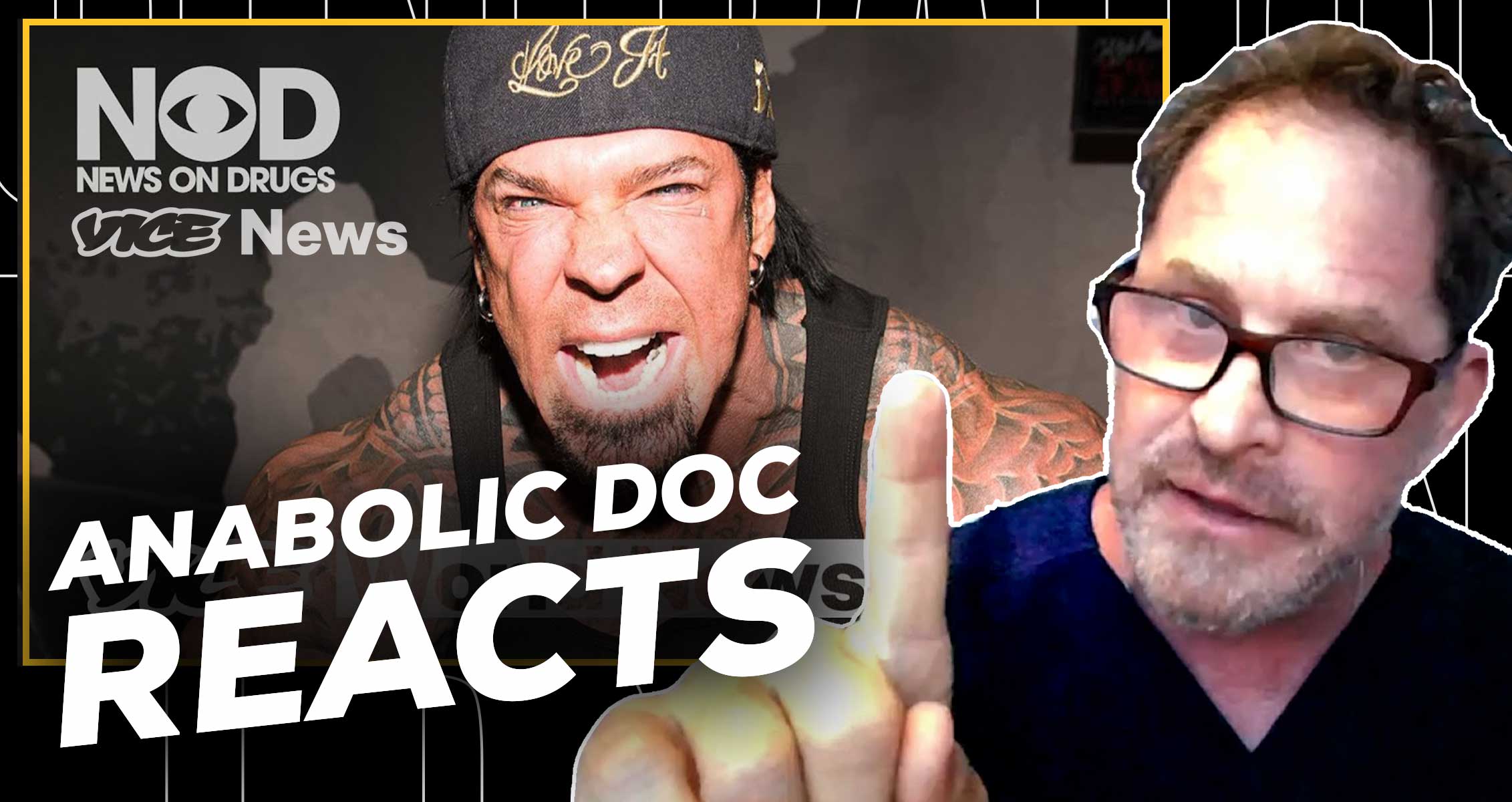
The Anabolic Doc Reaction To VICE Video: How Steroids Became More Popular Than Heroin
[embedded content]
Dr. Thomas O’Connor, aka the Anabolic Doc, reacts to Vice News’ recent video: How Steroids Became More Popular Than Heroin.
When people think about steroid or PED use, it’s often under the umbrella of professional sports. Bodybuilders, football players, even cyclists have all been caught using banned steroid substances in the past. But the truth of the matter is that steroids have grown to become an “everyman” drug. It’s not just athletes. It’s regular folk who use them as well. This was broken down in detail with the release of Vice News’ video – ‘How Steroids Became More Popular Than Heroin.’ But how accurate are the claims made in this video? In our latest GI Exclusive, the Anabolic Doc watches and reacts with his knowledge of all things steroids.
In May 2022, Vice News released a new episode in their series News On Drugs. This particular episode focused on steroid use and how it has become a sort of epidemic across the mass population. Steroids and PEDs are a major topic of discussion in the bodybuilding world. Often times, mainstream media gloss over or misconstrue facts that niche industries – such as bodybuilding – understand in more detail because of how directly steroid use affects the industry.
That’s why there was no better expert than Dr. Thomas O’Connor, aka the Anabolic Doc, to watch and react to this recent video. The Vice video has made its rounds and gone somewhat viral with hundreds of thousands of views. What can we learn from this video and what is misunderstood? The Anabolic Doc has often bridged the gap between strength sports and the larger medical world when it comes to steroids. So his expertise in this is perfect for a reaction video. Let’s jump into it.
[embedded content]
ABOVE: The Vice News video ‘How Steroids Became More Popular Than Heroin’ that the Anabolic Doc watched and reacted to.
The War On Drugs (Including Steroids)
The first segment of the video discusses the war on drugs and how the current action against steroids in the US is to keep it criminalized and prosecute anyone who buys or sells them not prescribed by a doctor. Much like the larger war on drugs – the Anabolic Doc finds this to be a failed war. Even worse, it prevents effective education and change to help improve our overall health. Long term steroid users are often quietly suffering – even if the substance abuse doesn’t lead to a fatality.
The Anabolic Doc agrees with the core notion of the video. Steroids are no longer just a pro athlete’s drug. It’s common place among regular folk. The doctor estimates that 15-20 million people use steroids in the US alone. This is far above the data stated in the Vice News video – which was sourced from data gathered in 2010.
With that in mind, all effort must be made to prevent steroid use as being supremely illegal and taboo. This current tactic simply makes users hide their drug use, not seek help when they need it, and get their information from flawed or nefarious sources.
The Vice News video also states that a big problem is steroids being lumped in with other “hard drugs” such as heroin. This is a mistake. It makes steroid users feel labeled as “heavy drug users” – which makes them feel like they need to keep it a secret and avoid medical guidance.
The Anabolic Doc believes that decriminalizing steroids is a big first step to helping make for a healthier society. The second step is convincing the larger medical culture that steroids should be treated differently than heroin. More education must be put into who steroid users are – so that the medical community as a whole can better treat users and prevent future abuse.
Bottom line: the overall culture on how steroids and steroid users are seen needs to change. Yes, steroids are harmful to our overall culture and health – but it shouldn’t be demonized. This won’t lead to change. We can reduce abuse through openness and education.
Debunking Steroid Stereotypes
There is a brief segment of the Vice News video that starts discussing concepts such as roid rage, sharing needles, and “penis shrinking.” This part is a bit of a mixed bag, with the professional correcting the interviewer on some misconceptions but also getting some facts wrong herself.
The Anabolic Doc points out that the expert being interviewed is not a medical professional – but instead a criminologist. So he understands why some of this misconceptions might have slipped through. This is why the doctor wanted to spend some time reacting to the video to straighten some stereotypes out.
The Anabolic Doc debunks the concept of ‘roid rage – stating, “If you’re an asshole then you’ll be an asshole on steroids.” He further compares it to the backwards way men may speak about a woman’s period.
Most people in today’s society know it is rude to use a period to invalidate a woman’s mood. This is true for steroid use and the stereotype of ‘roid rage. Yes, steroids vastly change your hormones, just like a period. And yes, it can lead to mood swings. But it’s not intrinsically related to rage. It affects every individual differently.
The Anabolic Doc also debunks the notion that steroid users line up and share needles at gyms. This may have been true decades ago when health information was less available. But in today’s society, most steroid users know how to be safe with clean needles and injections. This ties into lumping steroid users into the larger hard drug narrative. It creates a “demonized” vision of drug use where strung out users are sharing dirty needles and living in squalor. It’s just not true. There’s no data to support it.
Wrap up
Ultimately, the Vice News video brings attention to a core fact about steroids that many people aren’t aware of – that regular folk use these substances very frequently. It’s not longer an athlete drug. The Anabolic Doc commends the video for detailing this fact – and finds it encouraging that it’s catching waves. Changing the public perception of steroid usage is a big step towards changing how it’s handled.
However, the Anabolic Doc finds it important to fact check some of the misconceptions presented in the video. While it does an overall good job, much like science, these details need to be peer reviewed for viewers to be best informed.
You can watch Dr. Thomas O’Connor’s full reaction to the Vice News video in our latest GI Exclusive above.
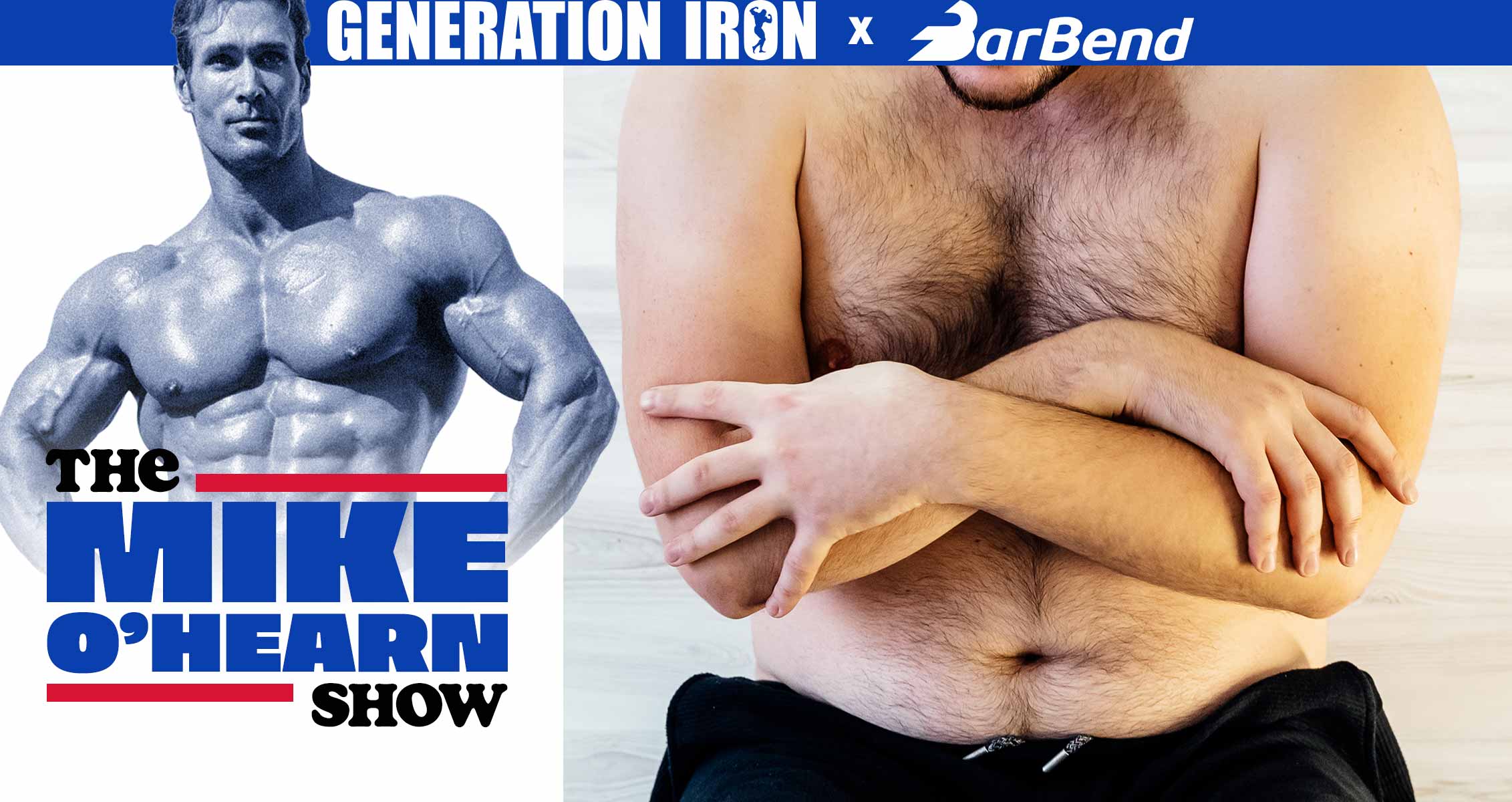
The Mike O’Hearn Show: “If You’re Not In Great Shape In Your 20s… I’m Done With You.”
[embedded content]
Episode 7: Mike O’Hearn debates with Vlad Yudin about cancel culture, actions vs words, and short sightedness in bodybuilding.
Mike O’Hearn sits back down with Vlad Yudin to discuss some key thoughts that have been on O’Hearn’s mind recently. Most notably, what makes a man? What determines the true value and character of a person? While this is somewhat of a philosophical topic – it can tie directly into bodybuilding more than you might think. In Generation Iron and Barbend‘s latest episode of The Mike O’Hearn Show, Mike discusses a person’s actions vs their words, the rise of online cancel culture, and how short sightedness is a major problem not just in culture at large but also directly affecting bodybuilding.
Mike O’Hearn has always preached on the value of longevity. He believes that bodybuilding, true bodybuilding, is about maintaining an incredible physique and strength over the long run. It’s one thing to be a natural talent when you are 28 years old. It’s another to still have that kind of talent and success when you are 50. This notion ties directly into O’Hearn’s question about “what makes a man.” No singular statement or action can truly determine the character of a person. It’s about their actions over the longterm. What kind of person are you in the whole of your life?
Actions vs Words: The Problem With Cancel Culture
The conversation starts off with Mike O’Hearn claiming that a person’s actions are far more valuable than their words. This sparks a discussion about cancel culture online and how quickly online mobs are ready to take down a person for a single tweet. While word can be damaging – O’Hearn thinks it is impossible for one statement or one tweet to represent the whole of a person.
While there may be some extreme exceptions – O’Hearn believes that the actions and the consistence of a person’s actions speak louder than anything else. This is where bodybuilding comes in. Fitness and bodybuilding are about action. They are about consistence of action and building not only a better physique but better health for the whole of your life.
“You can’t judge somebody based on someone else’s opinion of that person.”
– Mike O’hearn
Those same training tenets should be how we evaluate a person’s character. In today’s world of social media, short sightedness prevents evaluation of long term action. No matter how high someone may climb, the mob is always excited to see them torn down. Speaking of, this short sightedness ties directly into the other key topic of this week’s episode…
Short Term Greatness vs Long Term Success
Mike O’Hearn takes this larger concept and parses it down into bodybuilding and what defines bodybuilding success. O’Hearn believes that many young people are short sighted. This was true even before social media or the web. But perhaps modern technology has made this bad habit even worse for the newer generations.
O’Hearn has always seen bodybuilding success as longevity. While it can be impressive to build a 300 pound mass monster physique – it’s less impressive if that can’t be maintained in the long term of life. Mike O’Hearn is now 53 years old and has a physique that still matches how he looked in his 20s. He also is very rigorous about health checkups – and can claim that he is extremely healthy.
He owes all of this to his consistency throughout his life. He made certain sacrifices, less partying when he was young, more early mornings), so that he can feel as healthy in his 50s as he did when he was a young adult. He would rather be healthy and muscular in the long run of his life – than be Mr. Universe for even one year.
However, what he sees in the bodybuilding world is more of the opposite. Many pro bodybuilders aim to be the best possible in the short term. They want to be Mr. Olympia for as long as possible before burning out. This is why there is a growing drug and health problem in the sport. This is why many retired bodybuilding pros have bigger struggles in their older age.
O’Hearn understands that success such as becoming Mr. Olympia can be huge for opening doors in life. But is it worth cutting that life short? Or simply having a less healthy and more challenging twilight years?
Mike O’Hearn even ties this into finding the right coach. In an era where everyone is good at selling themselves online – it’s more important than ever to judge a coach or trainer by his actions and consistency in the long term of their career. If O’Hearn sees a trainer who is out of shape in his 50s, well then what can’t he teach about maintaining fitness and muscle into older age?
Wrap Up
You can watch Mike O’Hearn and Vlad Yudin’s full conversation about actions vs words, cancel culture, and bodybuilding longevity in our latest episode of The Mike O’Hearn Show. Check out new episodes every Friday only on GenerationIron.com and wherever podcasts are downloaded.
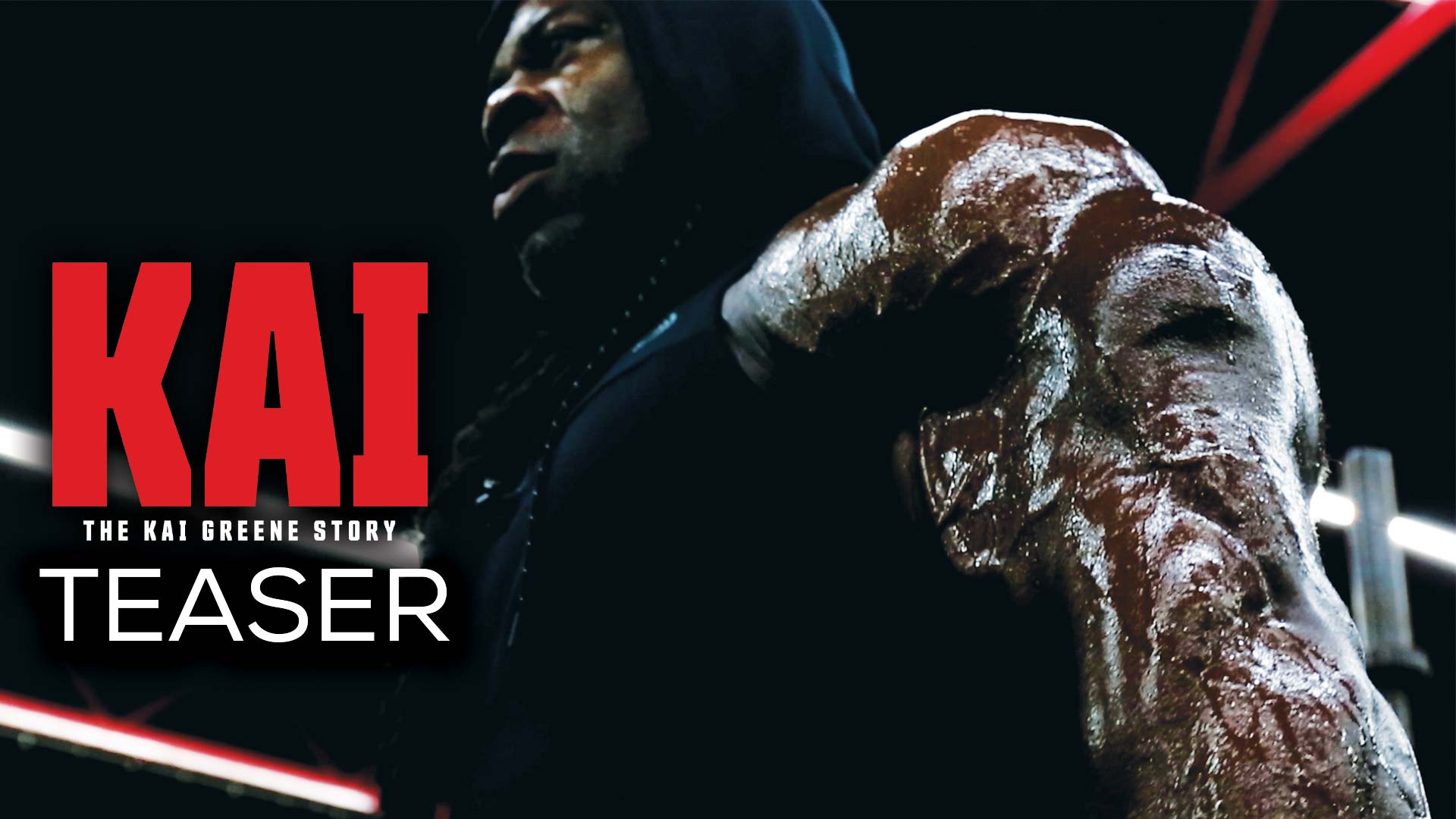
WATCH – ‘Kai’ Official Trailer | Kai Greene Documentary
[embedded content]
Watch the official trailer for the Kai Greene biopic documentary – Kai.
Earlier this week, Generation Iron Network revealed the first look teaser poster for the upcoming Kai Greene documentary titled – Kai. Now Generation Iron Network has released the first official teaser trailer for the Kai Greene film. While there is no release date yet for the documentary – the film is set to release later this summer. You can watch the teaser trailer above.
Kai Greene is one of the most iconic and enigmatic pro bodybuilders of the modern era. Though he has been retired for many years now, his persona and presence still looms large over the industry. His popularity is so large that each year he is rumored to return and compete in the Mr. Olympia competition. Many believe he would still be able to win despite being gone from the stage for over five years. Though this has never materialized.
Kai is the first authorized biopic of Kai Greene’s life story. Generation Iron were given unprecedented access to Kai and his archived records from his pro bodybuilding career and his childhood. Narrated directly by Kai himself – the film will provide the most direct look into his mind, life, and evolution to success throughout the years.
Kai Greene is typically known for his cryptic way of speaking – particularly when it comes to his past and his thoughts on key controversial moments in his life. Kai aims to be the definitive revealing chronicle of the real Kai Greene. Behind the cryptic dialogue, behind muscle, and into the true story of The People’s Champion.
Kai Official Synopsis
Kai Greene is one of the biggest modern day legends in bodybuilding both on and off the stage. He’s an athlete, an artist, an actor, and an entrepreneur. But his journey to greatness first started in childhood – when he chose bodybuilding as a form of survival. Growing up in Brooklyn without parents and later locked up in a juvenile correctional facility, bodybuilding became Kai’s source of hope that eventually took him to stardom.
Later in life Kai became one of the most recognizable faces in the fitness industry, praised by Arnold Schwarzenegger himself. His talent was only matched by one singular opponent, his rival and Mr. Olympia champion Phil Heath.
Now witness Kai Greene’s story of survival and climb to success in the first ever all-access documentary chronicling his life and career into the sport of bodybuilding and beyond.
From The Producer Of The Last Dance
In addition to being produced by The Vladar Company and Generation Iron Network – producer Matt Maxson is also attached to the Kai Greene documentary – who is best known for producing The Last Dance.
Emmy nominated Producer Matt Maxson’s The Last Dance starring Michael Jordan took the world by storm in 2020 – becoming one of the most talked about TV events of the year on ESPN and Netflix. He now took his producing talents to the world of bodybuilding and fitness with his involvement in the Kai documentary feature.
Matt Maxon’s other producing credits include Andre The Giant and The Circus: Inside The Greatest Political Show On Earth. Before producing, he spent five years working in production at HBO Sports where he worked on the network’s documentary series 24/7 which garnered 18 Emmy Awards.
The Last Dance received critical acclaim, with praise for its directing and editing. It won the Primetime Emmy Award for Outstanding Documentary or Nonfiction Series at the 72nd Primetime Emmy Awards. On review aggregator Rotten Tomatoes, the series holds an approval rating of 96% based on 53 reviews. The documentary series provided the most in-depth look at Michael Jordan’s career with the Chicago Bulls where he played alongside other legendary players such as Scottie Pippen, Dennis Rodman, and coach Phil Jackson.
Release Date
The teaser trailer for Kai notes that the film release will be ‘coming soon’ and has not detailed a specific release date as of yet. Generation Iron Network has confirmed that the film will be available on digital by late summer 2022. With it already being July, we can expect the film to be released by August or September of this year.
Kai is directed by Vlad Yudin (Generation Iron, Ronnie Coleman: The King) and produced by both Yudin and Edwin Mejia Jr. (Generation Iron, Ronnie Coleman: The King). It will be executive produced by Matt Maxon, David Gendron, Russ Riggins, and Viviana Zarragoitia.
Stay tuned to the Generation Iron Fitness Network for more updates on the upcoming Kai Greene documentary and expect an official release date announcement in the coming weeks.
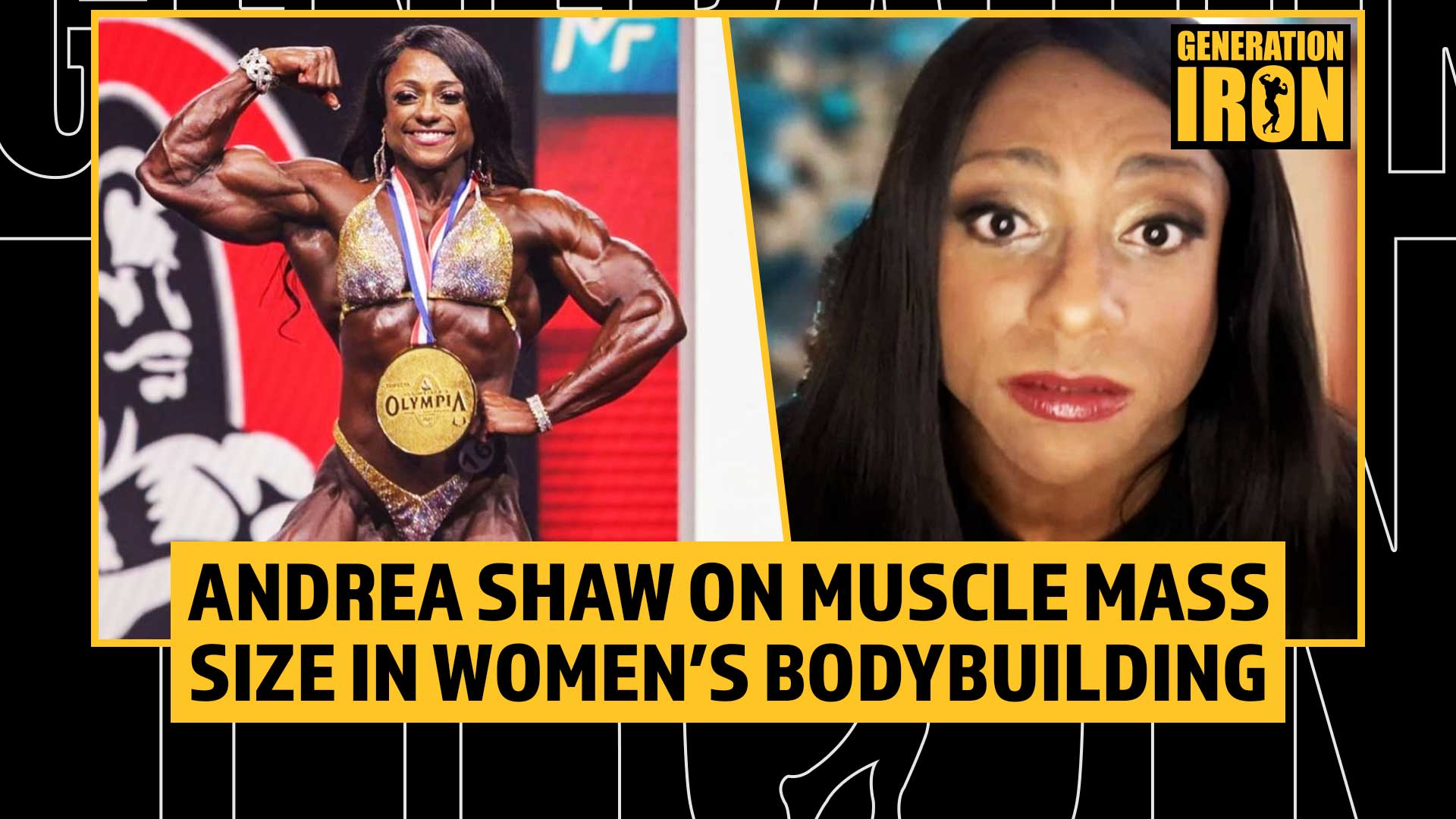
Andrea Shaw Talks Judges Expectations & How To Build Muscle Without Getting Too Big In Women’s Bodybuilding
[embedded content]
Andrea Shaw opens up about the delicate balance of expectations in Women’s Bodybuilding by judges.
Andrea Shaw is the current reigning 2x Ms. Olympia champion. And she has no expectations to slow down anytime soon. Her goal is to break the world record and win 11 Ms. Olympia titles. But how does one master the Women’s Bodybuilding division? How does the judging differ from the Men’s Open category? In our latest GI Exclusive interview, Andrea Shaw goes into detail about the delicate balance of building massive size but not growing too large in order to stay in judges good favor.
The classic saying in bodybuilding goes – bigger is better. This is largely in reference to the Men’s Open division. Ever since Dorian Yates started the mass monster era of the sport – it seems every champion tries to out-do the other by getting as massive as possible.
Women’s Bodybuilding is the female counterpoint to Men’s Open. However the same mantra has not always stuck throughout the division’s history. It’s been notoriously known to rattle back and forth between emphasizing femininity while also building massive muscle. This expectation is rather vague – and has led to legendary women’s bodybuilders in the past – such as Bev Francis – to transform her muscle mass back and forth desperately seeking the judges approval.
With the reintroduction of Women’s Bodybuilding to the Olympia weekend – we seem to be in the beginning of a new era of the sport. And Andrea Shaw is the shining light and prime example of what a Women’s Bodybuilding champion should be. It wasn’t easy – and she has been competing since before the Ms. Olympia returned.
During our conversation with Andrea Shaw, she discusses the delicate balance of building the right physique to meet judges expectations and criteria. She breaks down her max lifts and her overall strategy for contest prep.
ABOVE: Andrea Shaw in recent guest posing.
Andrea Shaw grows muscle rather fast. It’s something she’s learned to accommodate for as she trains for the Ms. Olympia. This is especially true due to recent feedback she received from the judges last year. They told her that she no longer needed to build any muscle.
But Andrea Shaw knows she’s capable of getting bigger. This means she needs to be very aware of her diet and training to ensure she can improve – without building more size. While there is no weight limit to the open divisions, this is an example of the different expectation placed on Women’s Bodybuilding.
Not that this is a complaint, Andrea Shaw is taking the advice seriously and changing up her workout routine to focus more on more body fullness, hardness, and conditioning. Rather than bulk up with more size. Much like any other division with a weight limit – Andrea Shaw is using her weight last year as the limit to her size going into the Olympia 2022.
You can watch Andrea Shaw go into detail about Women’s Bodybuilding judging, her training routine, and how she’s balancing out her size in our latest GI Exclusive interview segment above! You can also listen to our archive of full GI Exclusive conversations by visiting our Generation Iron Podcast homepage.
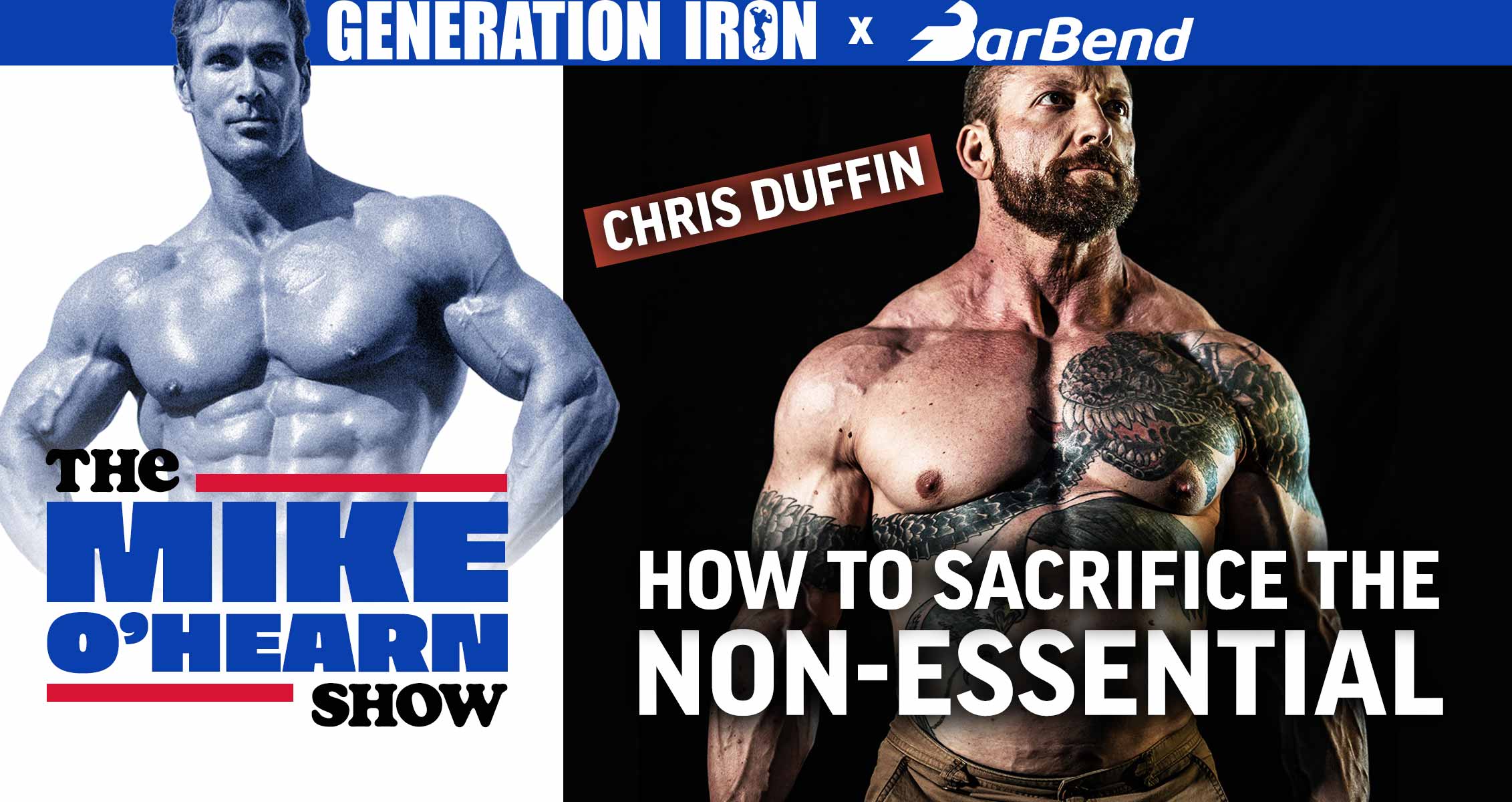
Chris Duffin Interview: From Homeless Teen To Engineer And Record-Setting Powerlifter | The Mike O’Hearn Show
[embedded content]
Episode 6: Mike O’Hearn interviews powerlifter Chris Duffin – “Challenge And Stress Is The Essence Of Life.”
Chris Duffin is a man passionate about all aspects of strength and fitness. He’s made it his entire life. Duffin is an engineer, powerlifter, and fitness entrepreneur who released a part-memoir, part motivational book titled The Eagle And The Dragon: A Story of Strength and Reinvention. The book explores Duffin’s self actualization from being a homeless teenager in poverty and transforming into a successful engineer and record-setting powerlifter. In Generation Iron and Barbend‘s latest episode of The Mike O’Hearn Show, Mike sits down with Chris Duffin to discuss his life story, his book, and also talk shop on high level training and motivation tactics.
Mike O’Hearn is a firm believer in working hard to overcome any obstacle. He doesn’t believe in handouts. And he doesn’t believe that a bad situation is an excuse to repeatedly fail. This is why O’Hearn was so excited to sit down with Chris Duffin and discuss his life journey into fitness and powerlifting.
How Chris Duffin Discovered Engineering, Weightlifting, & Escaped Poverty
Chris Duffin was born into poverty, had to raise his two siblings at a young age, and was surrounded by death and drug addiction in backwater rural America. He had every “excuse” to be another statistic that fell victim to drug addiction, abuse, and a cyclical life of poverty, pain, and suffering. But instead, with nothing to lose, he dedicated his life to escaping poverty and becoming the best most successful version of himself. Ultimately, fitness and weightlifting was his lifeline into happiness and success.
But Chris Duffin had other passions. His early obsession with reading led to him being exceptional in the realm of engineering. It was his initial lifeline that got him a full scholarship into college and a deeper education. It gave him his initial career and a stable financial foundation to provide himself more opportunities.
But throughout it all, weightlifting and fitness were lighting up his soul. He eventually realized that powerlifting was the kind of strength sport that fit him best. This provided an even bigger outlet to explore his passion with more focus and a specific goal. He soon built and fabricated his own private gym (using his engineering knowledge). This later evolved into a gym business.
The Nature Of Sacrifice: The Importance Of Paring Away The Filler In Life
Chris Duffin found himself at a crossroads. There was simply not enough time in the day for him to continue to succeed and improve with powerlifting and his gym – while also maintaining his career in engineering. Both were important to him. But deep down he knew that fitness as the core of his life.
This started a new phase in Duffin’s life. One that changed his perception and became a key tenet in his book. Duffin realized that he need to “cut the fat” from his life. There is only so much time in a day. And only so many years we live on this earth. Duffin realized he could not be fully happy with certain aspects of his life due to limited human capacity. He already tested his limits, pushed past them, and faced a real wall that needed to be scaled.
“So what I’m thinking is how do I pare away the non-essential. The more I pare away of the things taht are taking up my capacity in life. So not just my training capacity, how do I pare away the non-essential. The things I fill my life with or that I fill my training with. All of the stuff that isn’t adding value that I’m just doing.”
– Chris Duffin
So Chris Duffin started making hard decisions. He quit his job, sold his second house, and used the money and freedom to discover a career that fit in directly with his passion of fitness. He also divorced his wife. While Duffin does not divulge private details, he explains that his ex-wife was a wonderful person but not right or aligned with what he needed to be happy.
These were challenging decisions. But ultimately ones that allowed him to have more capacity for the things that truly fulfilled him in life. He went on to become a record-setting powerlifter, owner of multiple gyms, and now most recently, become the author of a book read by the world over.
Chris Duffin On The Importance Of Adversity In Life
Towards the end of Mike O’Hearn and Chris Duffin’s conversation. They touch upon the parallels between weightlifting and life in general. Weightlifting is about putting resistance on your body and pushing through to become a stronger person. Duffin believes this mentality applies to all of life. It’s challenge and stress that force us to reassess ourselves and become stronger people.
That strength might not always be physical. It can be mental and emotional strength. All things that add up towards being more capable and having more capacity to make yourself feel fulfilled and happy.
“Challenge and stress is the essence of life.”
– Chris Duffin
And just like weightlifting, it takes time before you really start to notice the results. The biggest challenge the average person has with fitness is the same challenge our society at large seems to have with seeking happiness and success. After the first few months you may not see obvious improvements. It’s frustrating and can make you want to quit. But stick with it and look back years later and you’ll be shocked how much you’ve changed without realizing it.
Chris Duffin realized this through extreme circumstances. But he wants to use his knowledge and experiences to inspire others to find the same end solution.
Wrap Up
Chris Duffin has had an extremely fascinating life and holds a depth of knowledge valuable to anyone interested in not only fitness but achieving self actualization. Mike O’Hearn and Duffin discuss far more than can be fully recapped in this article.
You can watch the full interview in our latest episode of The Mike O’Hearn Show above. Make sure to catch new episodes every Friday. Only on the Generation Iron Fitness Network and wherever podcasts are downloaded.
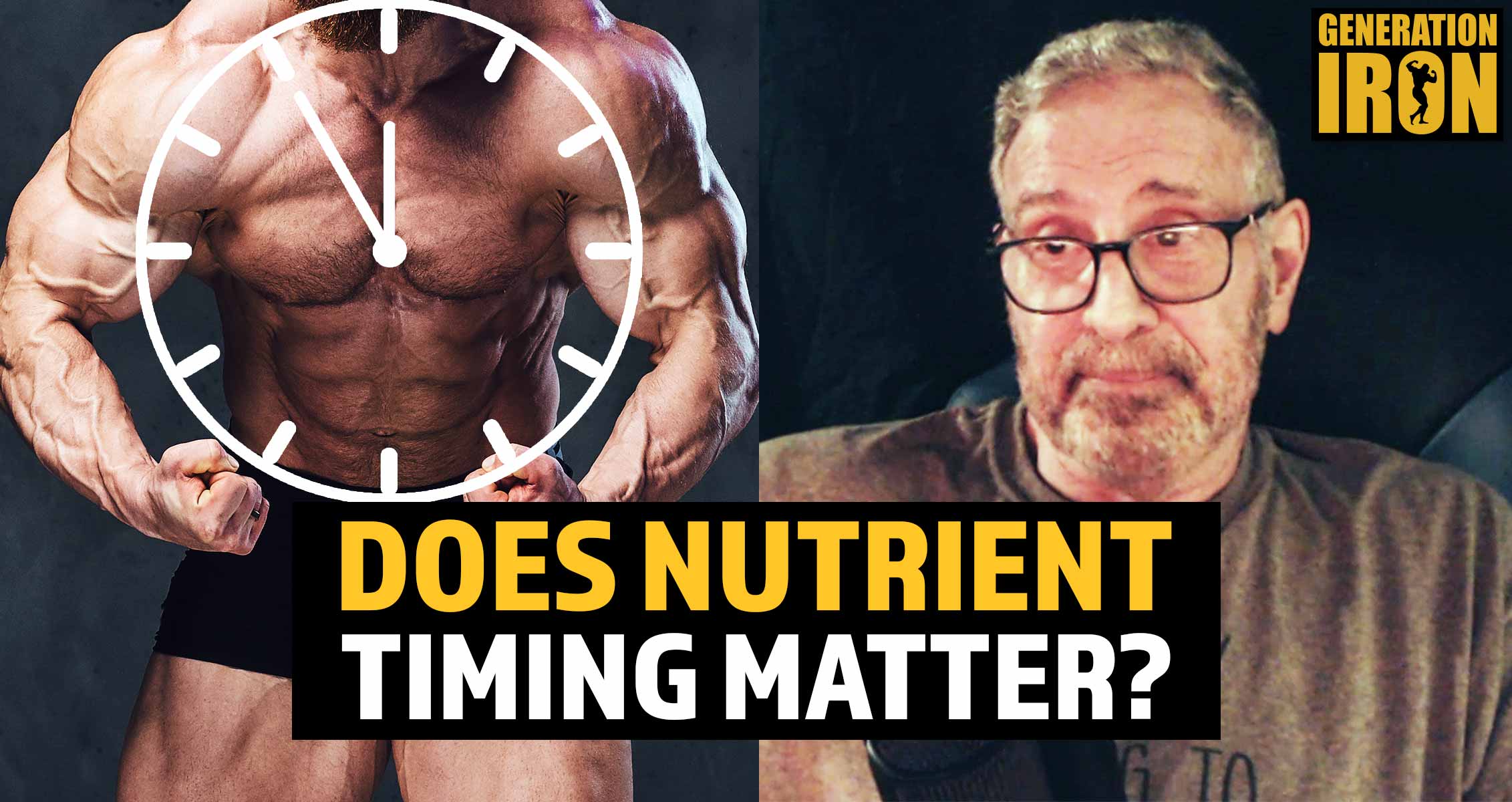
Straight Facts: The Truth Behind Nutrient Timing Before & After Workouts
[embedded content]
Jerry Brainum breaks down the straight facts behind nutrient timing. When does it matter and when is it BS?
It’s generally known that a person’s diet and nutrition are equally, if not more, important than workouts for meeting your physique and fitness goals. What you put in your body directly effects the “fuel” used during workout and recovery. But beyond general diets – there is a concept known as nutrient timing. Does the timing of when you consume certain nutrients and supplements vastly affect the results of our workout? In our latest episode of Straight Facts, Jerry Brainum separates fact from fiction with a complete breakdown of nutrient timing before and after your workout.
We all have limited time in a day. So for those fitness obsessed, it’s important to best optimize a workout to save time and reach goals as fast as possible. In terms of diets and supplementation, this is where the concept of nutrient timing comes in. Can a person perfectly target a window of time for supplementation and nutrition in order to get a boost to their workout? Whether that be more energy, more optimized protein synthesis, or better rest for recovery?
According to Jerry Brainum, the answer is that nutrient timing can help improve the results of your workout – but only slightly. At the end of the day, nutrient timing will not be a make or break aspect for those looking to upgrade their health and physique to the next level. Let’s break it down in detail.
The Two Hour Window: Should You Take Protein Supplements Right After A Workout?
When the fitness community talks about nutrient timing – the most popular consensus is a two hour window before and after your workout. When it comes to consuming protein or protein supplements after a workout – many believe that it’s vital to consume protein within that two hour window to help optimize protein synthesis.
However, according to Jerry Brainum, recent studies show that protein synthesis reaches it’s peak between 24-48 hours after a workout. Essentially this debunks any importance of consuming protein immediately after a workout. So long as you are getting the amount of protein you need every day – your body should be putting it to best use.
On the flip side, it does not hurt to take protein supplements right after a workout. So there is no reason to avoid the two hour nutrient timing window. With science changing and updating all of the time – you can choose to still take protein right after a workout just to be safe.
Carbohydrate Replenishment After A Workout
So we covered protein synthesis after a workout – but what about carbohydrate replenishment? During your workout, your body will use glycogen (from carbs) for energy. Because of this, many fitness enthusiasts would also use the two hour nutrient timing window to restore on carbs.
Jerry Brainum states that while it’s true that glycogen is burned during a workout, resistance training typically does not burn all of your glycogen stores in on session. So can consuming carbs immediately after a workout help? Yes – but only in slightly. It’s not a game changer for your physique, strength, or fitness levels.
However, if you are someone who does long endurance workouts – then carb replenishment after a workout can be vital. Longform exercise and endurance training will typically burn through your entire glycogen stores. So it’s extremely important for someone like a long distance runner to beef up on carbs right after a long training session.
Overall, Jerry Brainum explains that studies have shown that the body has a hierarchy of demands after a workout session. When your body is depleted in glycogen stores after a workout – it will prioritize replenishing glycogen before turning carbs into fat stores in your body. So yes – eating carbohydrates immediately after a workout is effective. How effective depends on the kind of training you are doing.
Nutrient Timing Before A Workout: Things To Consider
So we discussed at length nutrient timing after a workout – but what about before? Typically nutrient timing before a workout comes down to ensuring you have enough energy to put up your best training. A pre-workout supplement or caffeine can be helpful raising energy levels. Typically, caffeine takes about an hour to kick in – so consider this with your nutrient timing before a workout.
On the other hand, caffeine also stays in your system for about six hours. So if you are a night trainer, consider this fact when timing your caffeine intake for a workout. You don’t want to be unable to sleep and recovery later in the night.
Hydration is also extremely important before a workout. While the timing of consuming water comes down to how hydrated you are during the full day – the most important thing to consider is to stay hydrated by the time you train. Studies show that being dehydrated can lead up to a 4% decrease in strength – according to Jerry Brainum.
Wrap Up
So is nutrient timing a magic bullet that will transform your fitness regimen? No, not really. But there are some true valuable aspects to nutrient timing that should be considered. Nothing will be a game changer – but small things can all add up to a better fitness lifestyle. Each individual is different. Whatever ultimately helps you become a more focused and successful person in fitness should not be avoided.
You can watch Jerry Brainum go into complete detail about all aspects of nutrient timing in our latest episode of Straight Facts above. Make sure to check out new episodes every Wednesday. Only on the Generation Iron Fitness Network or where ever podcasts are downloaded.
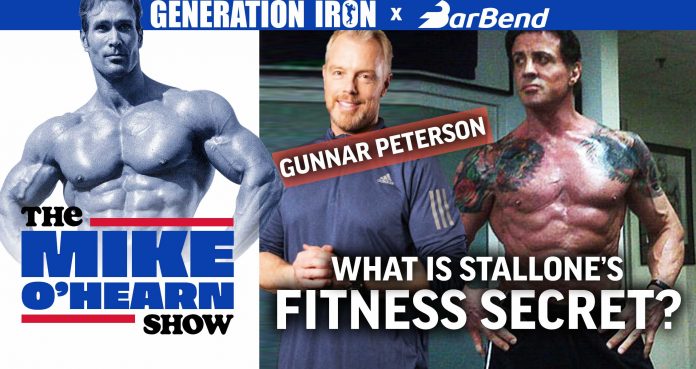
The Mike O’Hearn Show: Gunnar Peterson On Training Sylvester Stallone, Bruce Willis, & Pro Athletes
Mike O’Hearn and iconic trainer Gunnar Peterson dive deep into training history, techniques, and the secret to transforming into a fit life like Sylvester Stallone.
Gunnar Peterson is an iconic personal trainer best known for his work with celebrities and professional athletes. He’s been known to train Sylvester Stallone, Bruce Willis, Dwayne “The Rock” Johnson, and was the trainer for The Lakers. There is a reason why so many high profile individuals seek out Peterson. He has truly valuable insight into strength training and fitness. That’s why in this week’s episode of Generation Iron’s and Barbend‘s The Mike O’Hearn Show, Gunnar Thompson shares stories of training Sylvester Stallone, Bruce Willis, and how anyone, regardless of money or genetic talent, can transform via fitness.
A gym membership, fancy gym equipment, and a personal trainer are all valuable resources you can invest into for optimizing your fitness. There’s no doubt about that. But it’s not necessary to succeed in the fitness world. In fact, the greatest thing about strength and fitness is that it can be done by all walks of life – at zero cost. It’s clear that Gunnar Peterson is a high profile celebrity and pro athlete trainer. But he wants the general public to understand that just because you can’t afford a trainer like him, doesn’t mean you can’t live and look like Sylvester Stallone.
And that’s what this entire episode’s conversation is all about. Mike O’Hearn sits down with Gunnar Peterson to discuss the true secrets behind living a fit life. What can the general public learn from the insights of Peterson? And what can they take with them from this conversation to transform their life? Let’s jump into it.
The Human Body Is Very Forgiving: It’s Never Too Late To Start Being Strong And Fit
One inspiring conversation topic that Gunnar Peterson touches upon with Mike O’Hearn – is on the forgiving nature of the human body. Yes, the body can be very fragile and fall victim to injury or illness. But on the other hand, it’s also very resilient and forgiving. A fit lifestyle can start at twenty, thirty, or even in your forties and fifties. You can’t turn back time and stop the damage you may have done from an unhealthy lifestyle. But no matter what you’ve done, you can always start to become fit in the present.
“I was a fat kid,” Gunnar Peterson states during our interview conversation. He continues:
“When I learned about this and I saw, ‘Wait if I do that and then I do that and I tacked on this and I didn’t need that.’ I start looking different. Which means I start feeling different. Which means I start carrying myself differently. Which means I start seeing myself differently. People see me differently. I want to share that.”
Gunnar Peterson experienced the limitless transformative powers of fitness directly. And he wanted to share it with the world. To him, the biggest travesty is the idea that fitness is for a select elite few group of people. That you need to be athletically gifted to be good at fitness.
That’s not true – and Peterson wants the world to understand just how forgiving and flexible the human body can be no matter what point in your life you start. Peterson explains:
“It’s never insurmountable… the body is so forgiving. You can be a meth head, undernourished, not sleeping and start making some changes and you come out of that and you go, ‘I can turn into a physically fit, healthy, contributing member of society…’ to me that’s super powerful.”
Sylvester Stallone’s Fitness Secret… And It’s Not His Money
When people look at action star celebrities like Arnold Schwarzenegger, Sylvester Stallone, and The Rock – they may think that their physiques are only possible due to the untold riches they’ve accrued from their films. The general excuse is that someone like Stallone can still have abs over 50 because he has the money to invest in a trainer like Gunnar Thompson.
While we will not pretend that money doesn’t afford more time, flexibility, and resources – it’s also unfair to assume money is the only way to look like Stallone well past his 50s and into his 70s.
In fact, Gunnar Peterson explains that Stallone’s success might be directly related to a work ethic he had from the start. This includes his dedication to fitness. So what’s the secret? How can a person who finds fitness a chore learn to be motivated and dedicated like Sylvester Stallone?
Gunnar Peterson explains that it comes down to never giving up, even in the face of multiple failures. Easier said than done right? Well, one secret Peterson realized about himself and in successful action celebs like Stallone was this – always make time for fitness even in the face of failure.
What does Peterson mean by this? Here’s an example. If life throws a curveball at you and takes away your free hour usually dedicated to a workout. Don’t just throw that entire day’s workout away. First try to find another time to squeeze in your planned training. If that doesn’t work – still attempt any sort of workout. Even if it’s just for a spare 15 minutes.
This may not be your planned hour workout. And no – training for 15 minutes will not majorly improve your strength or fitness levels. However, it does continue to train your mindset. If you squeeze 15 minutes here and 30 minutes there because life has become too hectic, you are still building a second-hand subconscious focus on fitness and bettering yourself.
That’s the hardest part. And if you can eventually make working out second nature to every single week of your life – then the mental battle becomes easier. Then the scheduling a full workout becomes less stressful. Suddenly, everything feels easier and you are more motivated to prioritize fitness in your life.
“I was with him on Rocky Balboa, the sixth installment of the original Rocky series,” Gunnar Peterson states. He goes on:
“It was more like, when can we get the workout in? He’s never going to miss it. And it might be the morning, it might be before shooting, maybe he’s not there for the first couple shots, maybe he’s there late. And it’s just going to be wherever he is, let’s just get it, let’s get this done.”
Sylvester Stallone was directing, acting, and producing in Rocky Balboa. So time to train was very limited. But it was also important. Not only because he values fitness in his personal life but because his role in the film required a boxer’s physique.
So he would squeeze in a workout, no matter how long or short, whenever he had a window of opportunity. Peterson explains:
“So I’m in my gym and I get a text… from his right hand guy who would say, ‘Sly is on his way to you.’ And always knew there was a break in his day and he would drive from downtown, knock out a workout, and then go back and finish shooting.”
Wrap Up
There is rarely a life circumstance or personal deficiency that prevents an individual from being fit. We might not all be able to look like The Rock but we can still dedicate ourselves to fitness like The Rock. It’s never too late, you’re never too old, your genetics are never too flawed. The hardest part is to train your subconscious to always find room for fitness. Once you do that – the hard part is over and the real transformation begins.
Gunnar Peterson goes into far more detail about his training philosophy, workout tips and insights, as well as more stories of training celebrities and pro athletes. You can check it all out in our full interview on The Mike O’Hearn Show above. Make sure to watch new episodes every Friday. Only on the Generation Iron Fitness Network or wherever podcasts are downloaded.
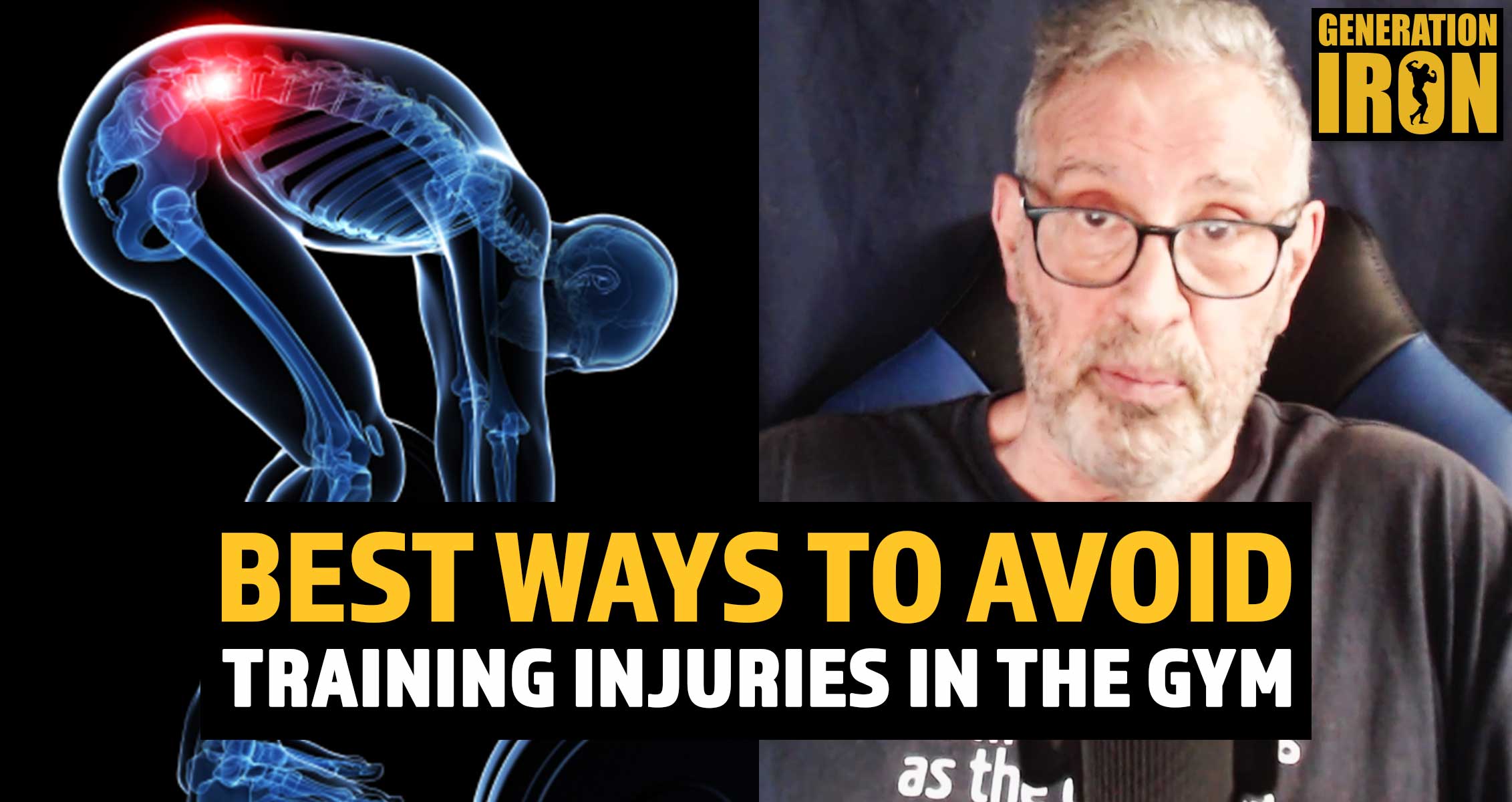
Straight Facts: Best Ways To Avoid Training Injuries In The Gym
[embedded content]
Jerry Brainum explores the top ways to improve your training and prevent injury in the gym.
When performing resistance or weight training in the long term, an injury will most likely occur in your future. It’s simply part of the risk of lifting heavy weight and pushing the body to new limits. However, injuries can be largely mitigated and reduced to less serious damage. How? In our latest episode of Straight Facts, Jerry Brainum breaks down the key tips, techniques, and tactics to reduce your chance of injury during training.
Sometimes a weight training injury is unavoidable. But many times, the injuries we see in the gym can be avoided if better focus and care was taken during a workout. Some of these factors are invisible and health related. Others are direct tactics that can be employed during a workout. In either case, it’s important for lifters to be vigilant about weight training safety. After all, a person could be one serious injury away from never being able to lift weight seriously again.
Let’s break down Jerry Brainum’s key tips and techniques for avoiding injury in the gym below.
Always Use Proper Technique
Form and technique are vital aspects to focus on when you are weightlifting. While some bodybuilders may “bend” technique and form to push their bodies harder, this is the exception and not the norm. Performing an exercise with incorrect form can lead to eventual injury.
Jerry Brainum believes that today’s gym-goers are far less focused on technique. He considers this a shame as technology has provided more resources than ever before right at the tip of our fingers. Yet despite these resources, distractions seem to actually be making form worse.
While this is just an anecdotal observation by Brainum, it’s still important to remain focused, do your research, and always ensure you have perfected exercise form before moving up to heavier weight. If you sacrifice form just to feel proud about moving up to the next weight – you are heading straight towards eventual injury. This leads us into our next tip…
Don’t Lift Too Much Weight, Too Soon
There is a sense of pride in breaking new PRs and lifting more weight than your friends or colleagues in the gym. However, that pride can drive us to lift too heavy, too soon. Typically when we push too far, we sacrifice form. But even beyond this, if your body is not ready to take on such an increased load of weight – the body can bend too far and lead to serious injury.
Don’t Forget To Warm Up & Stretch
Warming up might sometimes seem boring. Especially the more often you exercise and lift. However, warm ups are vital to preventing injury. Before a workout, your muscle tissue will be more “stiff.” A warmup helps flex and loosen the tissue. If you jump straight into heavy weight – that stiffness might lead to your muscles being unprepared for weight you can typically handle. Thus leading to an injury.
Jerry Brainum also discusses the concept of stretching between sets. Is it necessary to keep the muscle tissue flexible? There are two schools of thought on this. Some studies have shown that stretching between sets can actually increase muscle growth. While other studies have questions the validity of those claims.
Jerry Brainum’s suggestion? Stretching between sets will not harm you but it might have a slight chance of improving your workout. So if you want to give it a shot – go for it!
Avoid Bad Spotters At All Costs
A selection of exercises in the gym may require a spotter. A spotter is someone who watches the weight and provides a helping hand when you have maxed out or made an error in your lift. It’s important to ensure that your spotter takes it seriously and pays attention. One distracted moment can lead to an injury.
Don’t Overtrain
Some lifters are so focused on making gains that they hit the gym seven days a week for multiple hours a day. This is a mistake. Muscle does not grow during a workout. It grows during rest and recovery. If you do not provide your body time to recover you are not only denying optimized muscle growth – but putting yourself into a situation where you are not fully recovered and therefore may become more easily injured.
RELATED: Top Signs Of Overtraining And How To Avoid It & Tackle Fatigue
Don’t Slack On Nutrition
While this will be less of a problem for competitive bodybuilders, general lifters must be aware of how important nutrition is to fitness. If you are not getting the proper nutrition, your muscle tissue might be weakened. Thus more open to injury. The same can be said for recovery. If vital nutrients for recovery are missing from your diet – then your recovery becomes less optimized. This, of course, means you may not be fully recovered by your next workout and become injured.
Don’t Get Distracted By Your Phone
Unlike the past, there are little computers in our pockets that can now distract us no matter where we are. This includes the gym. But just like how you shouldn’t text and drive, you also shouldn’t text and lift weight. Bother are essentially “operating heavy machinery” and should be treated as such.
Being distracted by your phone can lead to slacking on form, or perhaps slacking on spotting a friend. It can, essentially, lead to lack of focus on the other tips listed in this video and article. So when you come to the gym, put the phone on silent and focus on the workout.
Wrap Up
You may notice that many of the items on this list are common sense. But distractions, overeager intentions, and lack of research can lead to these simple techniques being ignored. That’s why Jerry Brainum decided to break down his best tips and techniques for avoiding injury. Once they become second nature – they hardly feel like a task at all.
You can watch Jerry Brainum go into full detail in our latest episode of Straight Facts above. Don’t forget to catch new episodes every Wednesday. Only on Generation Iron and wherever podcasts are downloaded!
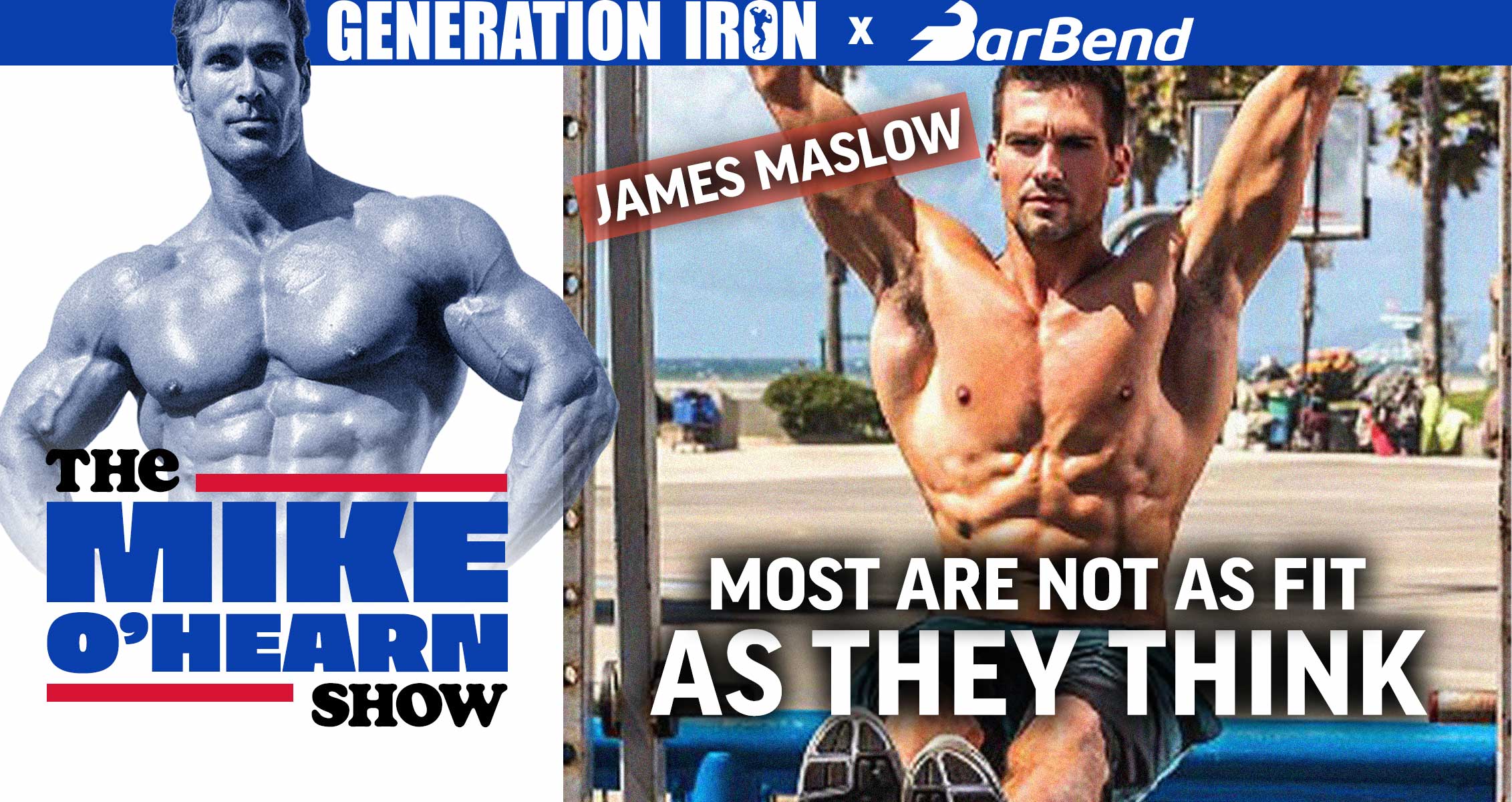
James Maslow: Most People Don’t Know What It Feels Like To Really Be Fit | The Mike O’Hearn Show
[embedded content]
Mike O’Hearn sits down with Singer and actor James Maslow being both physically and mentally optimized in order to succeed in life.
James Maslow is a likely best known for being a singer in the boyband Big Time Rush and also starring in the Nickelodeon show of the same name. But he’s also exploding into the film industry with three new films being released in 2022. Not only that – but as he’s aged out of being a “child star” he’s put emphasis and energy in building a lean physique for leading man roles. He seems to have avoided the pitfalls of being a child star and maintained a stead and successful career into his young adult years. In our latest episode of The Mike O’Hearn Show, James Maslow talks with O’Hearn on how fitness and bodybuilding strategies helped him find success in the entertainment world. Presented by Generation Iron and Barbend.
James Maslow definitely falls into the same school of thought as Mike O’Hearn when it comes to not only fitness – but overall outlook on the world. Dedication, focus, and consistency are paramount towards leading a successful, happy, and healthy life. With Mike O’Hearn a few generations older than Maslow – he sees this kind of mindset incredibly encouraging – and rare – in today’s world.
In fact, O’Hearn finds it particularly impressive in James Maslow due to his career starting as a child star on Nickelodeon. It’s well documented that many child stars ultimately suffer many public struggles as they transition into a career as adults. Maslow, on the other hand, has transitioned with grace and avoided the pitfalls that we’ve seen in many other young stars.
James Maslow believes a big part of that has to due with his fitness regiment. Much like Mike O’Hearn, Maslow dedicated himself to fitness and bodybuilding at a very young age. He’s always considered dedicated work into health and fitness as the foundation for success and happiness in all arenas of life.
ABOVE: James Maslow showcasing his physique in the TubiTV movie – We Need To Talk.
James Maslow On The Importance Of Being Fit And Optimized
James Maslow believes that many average people in this world have never fully felt what it’s like to be truly healthy. This doesn’t mean that most of the world are unhealthy slobs. But it does mean that majority of people in this world suffer from often unseen subconscious limitations all stemming from a lack of optimized health.
“I think most people have never felt what it feels like to be optimized. Truly, people think they are healthy and a lot might be somewhat healthy and the workout… but they have burgers three or four times a week and they are like, ‘Whatever. I worked it off at the gym.’ There’s just this constant justification. They are not feeling or performing to their full potential. They’re not feeling their best.”
– James Maslow
James Maslow goes on to state that he understands this because he was once like that. For a short while, he believed he was young and invincible. That he could drink heavy and then “sweat it out in the gym” the next day. But once he started truly making fitness a priority – everything snapped into place. He realized just how far from feeling good he really was. In a way he could never fathom before he changed his lifestyle.
[embedded content]
ABOVE: James Maslow stars in the upcoming feature film Wolf Hound.
The More Consistent Your Fitness, The Easier It Gets, The Younger You Feel
James Maslow goes on to explain that one his fitness and bodybuilding lifestyle became consistent, so much of the rest of his life became easier to bloom. His mental health improved and his focus on succeeding in other avenues outside of fitness grew.
Not only that – but he’s noticed that the older he gets the easier his training and diet regimen becomes. What feels more like a challenge and chore when you first start out for a year or two becomes second nature, more embraced, and suddenly the benefits are easier to obtain.
He looks toward the future to use a comparison. A fit person at 50 years old will feel such much more capable and younger than a person who never prioritized fitness at 50. Mike O’Hearn considers himself a testament to that fact. He was told that there was no way he can still be bodybuilding at a mass monster size over 50 years old. That the natural decay of the human body into older age won’t allow it. However, now well into his 50s, he’s still going strong and feels just as fit and capable as ever.
The myth that we cannot be functional and strong in older age is only due to a lack of focus on fitness. It’s a constant battle of the young. It’s human nature to assume you will live forever and that the things you do today will not matter because your youthful body is so resilient. But the truth is, if you can focus on fitness consistently at a young age – you will be much more capable, happy, and successful once you are over the hill.
Wrap Up
Mike O’Hearn sometimes worries that the younger generations of today don’t value the kind of hard work that he experience in his generation. While that might be simply a generational assumption – O’Hearn believes that James Maslow is a perfect example of what is possible when dedication to fitness becomes priority.
It’s not just health and longevity. It’s mental health and optimistic outlook. It’s easier to think happy when your body is running at an “optimal health setting” so to speak. While it may be impossible to prevent youth from being wasted on the young – James Maslow is a shining example of why bodybuilding and fitness matter beyond the “meathead” perception it has in the mainstream.
You can watch Mike O’Hearn’s full interview with James Maslow in our latest episode of The Mike O’Hearn Show. Make sure to watch new episodes every Friday only on the Generation Iron Fitness Network – or wherever podcasts are downloaded!
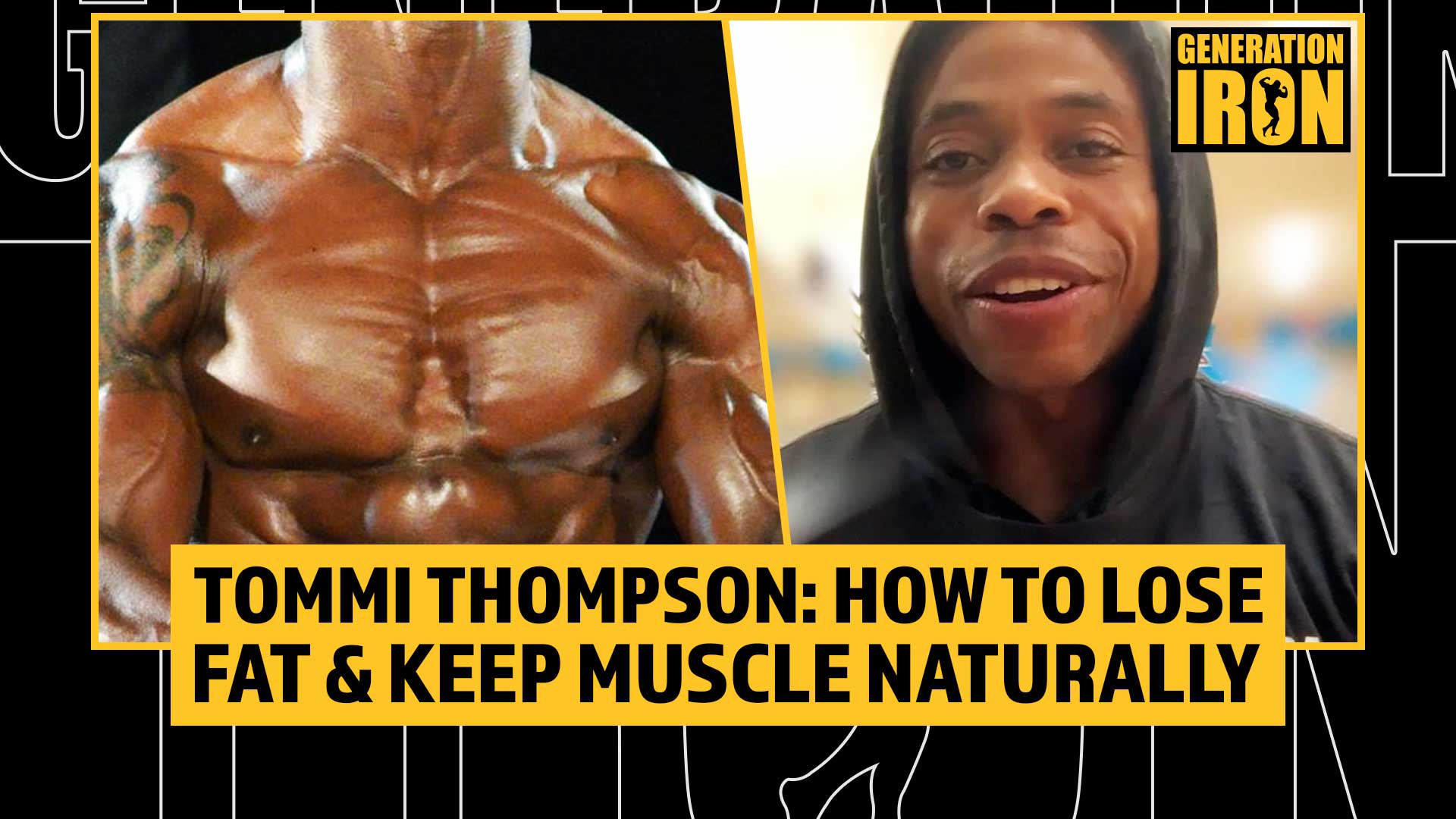
PNBA Bodybuilder Tommi Thompson: The All-Natural Way To Burn Fat Without Losing Muscle
PNBA bodybuilder Tommi Thompson is prepping for the World Championships In Florence, Italy… and shares some of his contest prep tips before the big night.
This weekend holds the INBA/PNBA Pro/Am World Championships in Florence, Italy. It’s one of the biggest bodybuilding competitions of the year for the league – and a huge opportunity for athletes to qualify for the Natural Olympia. It’s also a great moment for bodybuilders to represent their country during a varied international event. In our latest GI Exclusive, we sat down with Tommi Thompson to discuss his bodybuilding journey, contest prep breakdown, and how he burns fat without losing muscle the all-natural way.
Tommi Thompson is a Men’s Open bodybuilder in the INBA/PNBA natural bodybuilding league. He’s been a rising star in the sport – with the benefit of being trained by former Natural Olympia champion Philip Ricardo Jr. Thompson is looking to make waves this year – and the upcoming World Championships this weekend is his first big opportunity to take it to the next level.
During our interview we go into detail about Tommi Thompson’s bodybuilding origins, how Philip Ricardo Jr. became his coach, and why he chose to go all-natural and compete in the INBA/PNBA league. You can watch his comments on this and more in the video above. But for now – we wanted to focus on his tips and strategies for cutting fat and keeping muscle while remaining an all-natural athlete.
How to naturally burn fat and maintain muscle
Tommi Thompson will be the first person to tell you that the journey of being a pro bodybuilder is to be an eternal student. Every year and every new competitive season, Thompson is adjusting and reformulating how to improve his physique even further. The same is true for his tactics during contest prep and cutting weight. The goal is to lose weight and get shredded without burning away that hard earned muscle.
With the INBA/PNBA being a tested league, there are less supplemental options to help during the cutting phase of bodybuilding. So what is Thompson’s current strategy for burning fat without losing muscle? He currently focuses on consistently maintaining heavy reps.
Typically, trainers would suggest that reps increase and weight decreases during the cutting phase of contest prep. But Tommi Thompson wants to try and keep his weight heavy so that his muscle maintains the massive size he’s built earlier in the season. He does combine this with cardio in order to get that extra edge on hardening up his physique.
What might be most shocking is that Thompson reveals he does 90 minutes of cardio each day. That’s a lot of cardio compared to the standard in bodybuilding. There are even some pros who avoid cardio completely. Thompson is aware of this – and knows that too much cardio can start cannibalizing muscle. That’s why every week he steps back and reevaluates his body and adjusts accordingly.
Sometimes he may pull back on cardio for the week. Or perhaps another week he will lighten the weight and increase reps. Like a sculpter making a statue – he continues to adjust and mold his approach until he puts together the perfect package.
Wrap Up
Tommi Thompson is a promising young bodybuilder with a lot of momentum behind him. He’ll put his latest training and diet tactics to the test this weekend when he competes at the World Championships in Florence, Italy. Only time will tell what kind of impact he will have on the league and the sport.
Until then, you can watch Tommi Thompson go into detail about his contest prep tactics, as well as many other topics, in our latest GI Exclusive interview above.
